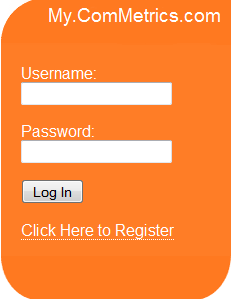 Imagine your boss has just told you that budget cuts necessitate cutting social media expenses and you might lose your job shortly. In a semi-desperate move you suggest that she give you another three months to show what a difference you can make for the company by revamping the corporate blog.
Imagine your boss has just told you that budget cuts necessitate cutting social media expenses and you might lose your job shortly. In a semi-desperate move you suggest that she give you another three months to show what a difference you can make for the company by revamping the corporate blog.
Can we help? Absolutely! After publishing the 2009 FT ComMetrics Blog Index, which ranks FT Global 500 and Fortune 500 companies’ corporate blogs, we came to the conclusion that it might be helpful to share some of the insights we have gained.
Today we release the first installments of these tips and lessons, the second of which can be read here:
2) Lessons 5 – 7: Setting the stage – ready – go (2009-06-03)
The next set will be published July 8:
3) Lessons 8 – 11: Whatever domain or home you choose – beware
4) Lessons 12 – 13: Getting the basic SEO issues right
The final set will come your way August 12:
5) Lessons 14 – 17: Authenticity and quality are key
6) Lessons 18 – 20: Improving blogging effectiveness
To make sure that you don’t miss any of these upcoming posts, just leave your e-mail here:
Lesson 1: Ropes to skip – learn from others
There is no good reason to make the mistakes we discuss below and in subsequent posts. Just read these rules and decide carefully.
- ComMetrics – thanks to input and advice from others we have come up with the 20+best WordPress plugins to make our lives easier; and
Daimler – Why did Beck’s not ask Daimler before starting an expensive revamp of its blog?
Lesson 2: Define the type of blog you want
Who or what is it supposed to provide information about? Delivering information to investors is different than blogging about a non-profit organization’s neighborhood initiative.
- Dell‘s investor blog, DellShares, serves shareholders, while Direct2Dell offers customers a way to find out about new products and provide feedback.
Dell’s blogs deliver different fare and their success speaks volumes about the company’s smart blogging strategy.
Lesson 3: Define the target audience
The question is, are those that read Renault’s Formula One racing team blog would be the kind of people you want to reach out to. Hence, who is your target audience – sports fans, customers, potential clients, regulators, donors or someone else? Some of your audience may fall into more than one category, such as sports fans who have and will continue to purchase Renault’s cars.
The challenge of finding your target audience is nicely illustrated by:
General Electric’s blog is one example where institutional investors and shareholders can get information they might not be able to get elsewhere. But if you are interested to find out about its research and what future products it has in store, GE Global Research Blog will serve you better.

To see how well your blog strategy works register your blog here:
My.ComMetrics.com – sign up for FREE and compare your performance to the Renault F1 team or UPS racing blogs – we’ll help you gain the upper hand.
Lesson 4: Determine what the focus of two-thirds of the content will be
People sign up to get a blog’s RSS feed because the content looks of interest to them on a first or second visit. Straying far from the topic is not always appreciated by one’s audience, considering their many other time commitments and options for news sources. So staying on target is key when it comes to delivering unique content.
- UPS racing in the US – get the latest results and box news
Renault F1 team – all about the races – from news about the Red Bull team to McLaren Mercedes – this is what you get
Both cases above show that these blogs provide racing news, so choose Renault for Formula One or UPS for NASCAR news. Somebody who is not a car racing fan is definitely not a targeted reader for these blogs, which is fine as long as it remains of interest to the target audience.
Okay, now it’s your turn. Would you have addressed any of these challenges differently? Did I miss something in one of the three points addressed? Do you agree or disagree? Give us shout-out, whether for joy or frustration, but please share your thoughts. Thank you.
P.S. – Continue with our next set of ropes to skip: 2) Lessons 5 – 7: Setting the stage – ready – go (2009-06-03).
Pingback: Urs E. Gattiker
Pingback: Insight versus hindsight: very useful links
Pingback: Urs E. Gattiker
Pingback: MyComMetrics
Pingback: World Economic Forum
Pingback: MyComMetrics
Pingback: Naijand Inc
Pingback: Paul Johnston
Pingback: Urs E. Gattiker
Pingback: Increasing blogging effectiveness: Step 4
Pingback: Very useful links: Best insights this week
Pingback: Very useful links: Facebook to Morgan Stanley
Pingback: Very useful links: White House to Adobe
Pingback: Very useful links: Friendfeed to Berlusconi
Pingback: Increasing blogging effectiveness: Step 3
Pingback: Increasing blogging effectiveness: Step 5
Pingback: Increasing blogging effectiveness: Step 6
Pingback: 3 golden rules for social media marketing
Pingback: Urs E. Gattiker
Pingback: Drustvo Srbije za PR
Pingback: CyTRAP
Pingback: MyComMetrics
Pingback: Naijand Inc
Pingback: Firmenblog: Wer ist die Nummer 1? » » Social Media & ROI